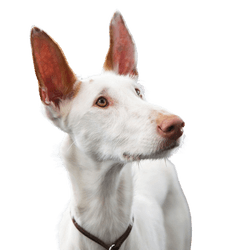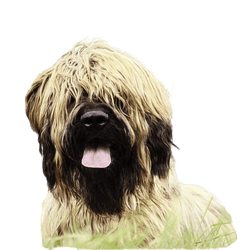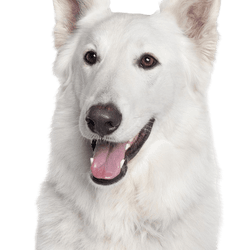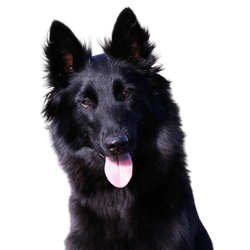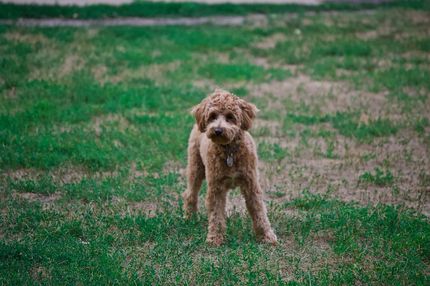
Moscow watchdog Breed description: Character & Co
Moscow watchdog
Facts & Origin
Characteristics of the Moscow Watchdog at a glance
The Moscow Watchdog is a dog breed not recognized by the FCI. He originates from the former USSR and today's Russia. The Moscow Watchdog is recognized by the RKF - the Russian governing body, which belongs to the FCI. It belongs to the group of Pinscher, Schnauzer, Molossoid, Swiss Mountain and Cattle Dogs.
Origin and history of the Moscow Watchdog
The origin of the Moscow Watchdog dates back to 1950, which makes it a relatively young dog breed. At that time, shortly after the Second World War, the Russian military needed an intelligent, faithful, steadfast and self-confident service dog, which above all withstood the rough weather conditions of the former USSR. Thus, the Moscow Guard Dog resulted from a crossbreeding that took place in Moscow, between the St. Bernard and the Caucasian Ovcharka. At that time, the Soviet army made it its goal to make the temperamental and almost uncontrollable Owtscharka a little more obedient. The first breed standard of this breed goes back to 1958. However, the state recognition of the Moscow Guard Dog did not take place until 1985 in the former Soviet Union. After their demise in 1992 the Russian umbrella organization RKF kept the recognition. Until the 80's the Moscow Watchdog was a purely state dog breed, which was forbidden for private citizens. Only after the official recognition Moscow Watchdog breeders brought the dogs into the trade and so this dog breed slowly spread all over the world. Nowadays you can find them also in the western countries, like Germany and the USA.




| Alternate Name | Moskovskaya Storozhevaya |
| Origin | Russia |
| Life expectancy | 8 - 12 years |
| Care requirements | low-maintenance |
| Activity level | average |
| FCI group | not recognised |
| AKC group | not recognised |
| KC group | not recognised |
Attitude, character and temperament of the breed
Nature and character of the Moscow Watchdog
The Moscow Watchdog is considered to be temperamental and energetic. He is also active, dexterous, persistent, intelligent and teachable. As a guard dog, he is obedient and well-balanced with good self-confidence. Since he was bred specifically as a service dog, he has strong guarding behavior and with proper specialized training he can be used as an escort or protection dog. Like other working dogs, he is very attached to his trainer. As a good guard dog, he is reserved and skeptical towards strangers and should not be harassed under any circumstances, otherwise he will show aggressive behavior.
Education and keeping of a Moscow Watchdog
The Moscow Watchdog is not suitable as a beginner dog due to its strong character and temperament. Already with the education of Moscow watchdog puppies should be paid attention to consequence, dominance and perseverance. Since the Moscow Watchdog can show itself to be stubborn, this behavior should be corrected through consistent training. Education begins in puppyhood. Muscovy Watchdog puppies should learn as early as possible that it is the human, not the puppy, who takes the lead. With this dog breed, it is advisable to visit a dog school that has experience with guard dogs. This is because the older the Moscow guard dog gets, the harder it is to successfully reprimand him. If the large Moscow Watchdog has not enjoyed a dominant upbringing, it can later turn out to be very headstrong, which poses a problem for the owner, given the dog's body mass. If the Moscow Watchdog is accustomed to children as a puppy, it can become a loving family dog. However, as an adult guard dog, care should be taken when handling children.
Due to its thick coat and undercoat, the Moscow Watchdog enjoys long walks in all weathers. As an active and studious watchdog, he should not be underchallenged in his daily routine. A dog training area, as well as enough exercise are perfect for this large dog breed.
Character
Usage


Health and breeding information
Care and diet of the Moscow watchdog
The Moscow Watchdog is characterized by its robustness and good health. There are no breed-related diseases in him. Regular visits to the vet for vaccinations and check-ups are nevertheless recommended. Due to its dense coat, the guard dog should be brushed weekly. During the coat change, daily grooming is recommended. The Moscow Watchdog does not require a special diet. However, as dogs in general are former carnivores, their diet should be based on meat as much as possible. High quality food has a positive effect on a dog's health.
Buying a Moscow watchdog
Those who want to buy a Muscovy guard dog should be sure that the active and temperamental dog is well compatible with their own lifestyle. Those looking for a puppy should check locally with a Moscow Guard Dog breeder who makes a reputable impression. A visit to a breeder, can give you a first insight into the early puppy life of the young dog. If it is possible for you to meet the parents, they should make a balanced and healthy impression on you and in no case be aggressive.


Moskovskaya Storozhevaya Look and Coat
The Moscow Watchdog is strongly built and well muscled. Since a Moscow Guarddog male grows between 68 cm and 78 cm tall and weighs at least 55 kg, it belongs to the large dog breeds with his massive, but not ponderous, build. Moscow Watchdog females have a height at withers of 66 cm to 73 cm and a weight of at least 45 kg. The coat of the Moscow Watchdog is long, dense and may eventually be slightly curly. It has a straight top coat and a strong undercoat, which makes it particularly weather resistant. The recognized color variations of the Moscow Watchdog must always include red. It may be found in the following colors:
- red
- orange
- red spotted
- red spotted
- red and black
- sable
The Moscow Watchdog is known for its typical black mask and white patches on the chest, front legs to the elbow and hind legs to the hock. The Moscow Watchdog has a life expectancy of 12 years.
| Fur length | long |
| Fur | flat coated |
| Ear shape | Floppy Ear |
| Tail | fanned out |
| Anatomy | massive |
| Size ♀ | 66 - 73 cm |
| Weight ♀ | 55 - 65 kg |
| Size ♂ | 68 - 78 cm |
| Weight ♂ | 55 - 65 kg |
| Suitable For | - |
Colors
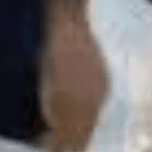
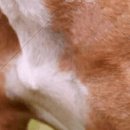




Other large dogs
Useful Articles
You can find articles that might interest you in the dogbible blog to match your favorite breed.
Visit our magazineto stay up to date on dog trends.
To find out more, view our Privacy Policy
Find here the breed that suits you and find out what character traits it has. Here you can also learn more about the origin, size and weight of your favorite breeds.
Matching your favorite breed, you'll find articles that might interest you on the dogbible dog blog.
Relaxed walking on the leash in spite of other dogs - 3 tips for leash leadership
5 tips to prevent joint problems in dogs
Shortening the claws of a dog - this is what you have to pay attention to










